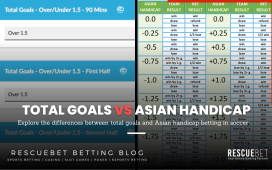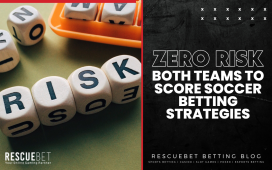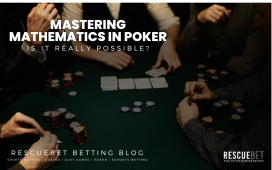The Martingale betting strategy can be a very high-risk betting strategy done by high-rollers. The reason high-rollers adopt the Martingale betting strategy is that they have a larger bankroll. A larger bankroll gives a high-roller multiple opportunities to win a wager. The Martingale betting strategy entails two main features. A punter must double the wager after a loss to make up for all losses in the next bet. A punter must reduce their stake after a win or keep a consistent stake by taking half the profits off the table. Punters adopt the Martingale betting strategy in betting events with even odds or a 50-50 chance of occurring. Considering the house edge, a punter should look for anything close to even odds on the wager. Some of the betting markets’ punters adopt a Martingale betting strategy include:
- Roulette.
- Select basketball matches.
- Select Esports games.
- High-roller blackjack.
- High-stakes poker.
- Other types of betting events.
With even odds, a punter can double their wager on the following bet and needs to strike just once to win everything back.
Example Of The Martingale Strategy
Let’s take a casino betting example. A punter can legally use a Martingale betting strategy on casino games such as roulette. However, a punter cannot utilize the Martingale betting strategy on all types of roulette wagers or roulette betting markets. A punter needs to select any even odds wagers, including making a wager on red or black, odd or even number, or high or low (number). A punter cannot place a bet on select numbers or 1/3 betting markets either. A punter can place a wager starting with a predetermined stake amount. A punter can select a fixed staking amount such as the Maria staking plan, Miller betting system, or a variable staking amount each round. A punter must always consider how much of their bankroll they’re willing to wager on a single bet. If he chooses 10% to wager on each round, they can lose all their funds the next in 4 to 5 rounds. If a punter picks 5% to wager each round, they can lose their funds in 6 to 7 losses in a row.
For example, if a punter chooses to wager with a $100 bankroll in a roulette game, they may select an initial selection based on 5% or $5 on the first wager. If the punter wins, they place another chance starting at the base rate of 5$. If a punter loses, they put a $10 bet to make up for the losses on the last wager and potentially some more on the rest of the current stake. If a punter wins from here, the punter wins $20. However, if the punter loses a $20 wager, they wager $40 on the next turn or double $20. The house edge in the above example includes slot 0 on the European roulette table and slot 00 on the American roulette table. American roulette has a higher advantage than European roulette because of two places allocated to 0 and 00 that belong to the house. A higher house edge means lower profits in the long run for the punter.
The Reverse Martingale Betting Strategy
The reverse Martingale betting system is also called the anti-Martingale betting system. The reverse Martingale betting system is opposite to the regular Martingale betting system. A punter must follow the winning and losing streaks to benefit from a reverse Martingale betting strategy. A punter can utilize the reverse Martingale betting strategy on online casino betting events and sports betting, and other types of wagering events.
After a loss, a punter reduces their next wager in anticipation of a losing streak. A punter can make the most money from this strategy if a punter has a few lines while playing. If the game keeps alternating with no strings, a punter is unlikely to win. After a win, a punter can secure their winnings by reducing the amount staked on the next wager instead of increasing it.
























